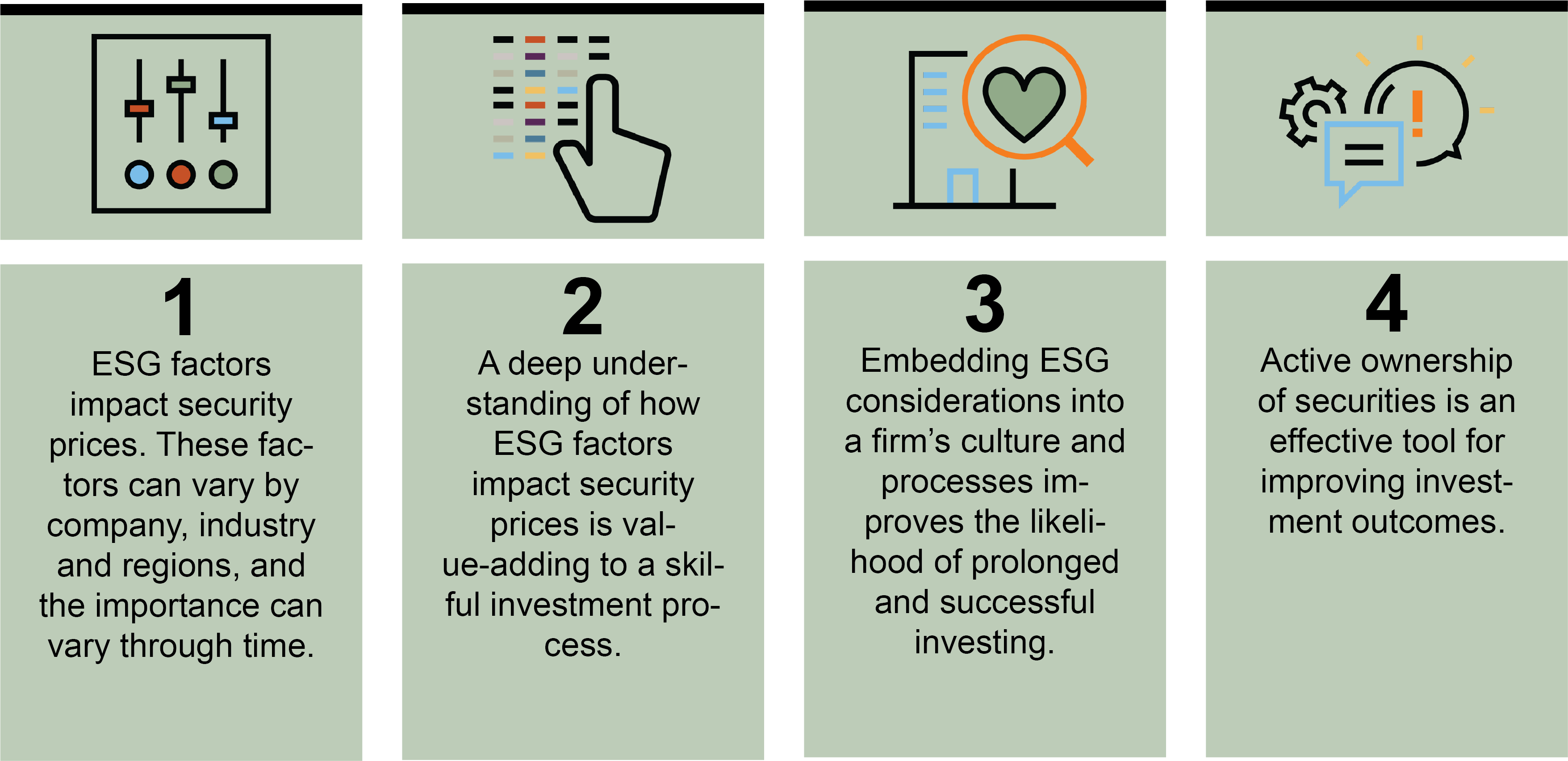Responsible investing roadmap: Part 2
ESG (environmental, social, and governance) principles are now often considered must-haves for a well-diversified portfolio. In this second part of our responsible investing roadmap, we’ll delve into more detail on how to integrate ESG issues into your organisation. The first steps towards a meaningful framework involve educating your key stakeholders and defining what responsible investing means to you. Here’s what you need to know.
Educate your team
Your responsible investment plan won’t get far without engagement from your board or investment committee. Before making any decisions, you and your team need to understand what is meant by ‘ESG risks’, and how these risks may impact shareholder value.
Exhibit 1: Key ESG risks

The discussion around responsible investing is constantly evolving, so its important to get your team up to speed. Here are some more topics to consider as part of your educational process:
- The history of responsible investing
- Key terminology and investment approaches used in the industry (i.e., socially responsible investing, positive or negative/exclusionary screening, active ownership, ESG integration, impact investing, materiality, net zero investing, climate solutions, etc.)
- Fiduciary and legal implications
- Implications for investment performance and performance drivers
We recommend involving your investment provider or consultant to lead the effort to avoid introducing personal bias into the process. Ideally, this adviser should have significant responsible investing expertise.
Define your beliefs
Not every person or organisation will have the same values. Because ‘responsible investing’ can be defined in different ways, you’ll need to be clear on what it means to your team. Your beliefs will be the cornerstones of your responsible investing framework.
Accommodating the diverse views of your various stakeholders can be challenging. Here are three questions you could consider starting with:

Once you and your team have decided on your responsible investing beliefs and goals, you should clearly articulate these in your investment policy statement (IPS). The IPS should include a new section incorporating the details of your new ESG beliefs as well as the governance and reporting framework that is in place. We’ll look at integration and reporting in part 3 of this series.
Russell Investments’ responsible investing beliefs
As an example of what the output of this exercise might look like, here are our responsible investing beliefs. We think ESG principles and performance can be complementary. Our solutions aim to reflect our clients’ desired exposures without jeopardising returns.
The bottom line
Exhibit 2: Russell Investments’ responsible investing beliefs

Creating a responsible investing framework from scratch isn’t easy. To start, you’ll need to engage your team and make sure everyone understands the concepts and terminology involved. The next big hurdle is collating the various viewpoints of your stakeholders to build a consensus on what responsible investing means for your organisation. Once everyone agrees on what your values are, the easier it will be to act.
In the final part of this series, we’ll look at how you can integrate and implement your new ESG beliefs.